When it comes to wildland firefighting, the importance to choose the right wildland fire boots cannot be overstated. These boots are not just footwear; they are a crucial part of your safety and performance in the field. In this guide, we will walk you through everything you need to know to choose the right wildland fire boots tailored to your specific needs and preferences. Whether you’re a seasoned firefighter seeking an upgrade or new to the field, our expert advice will guide you. Let’s explore the key factors for selecting the perfect pair of wildland fire boots to enhance your safety and effectiveness on the job.
Table of Contents
ToggleWhat are the NFPA Standards for wildland fire boots?
According to the NFPA 1977 wildland boots specification, wildfire boots must have the following features:
- Leather or a similar water- and fire-resistant material is required for their construction.
- The distance between the top of the boot and the bottom of the heel must be at least 8 inches.
- A lug sole that offers stability and traction on uneven ground is essential.
- To protect the toes from impact and compression, they must have a steel or composite toe cap.
- They need to feature a shank to protect the foot from sharp things and to support the arch of the foot.
- They must have a heel that is at least 1 inch high and no more than 2 inches high.
- They must have a closure system that prevents the boot from slipping off or loosening during use.
These requirements are meant to ensure the safety and comfort of the wildland firefighters, who often face harsh and unpredictable situations. However, these requirements are not the only factors that you should consider when choosing wildland fire boots. You should also take into account your personal preferences, such as the fit, the weight, the style, and the price of the boots.
Recognizing the Particular Demands for wildland Fire Boots
Wildland firefighting is a difficult job that calls for specific equipment. Rugged terrain, sweltering heat, and dangerous circumstances frequently confront firefighters. Therefore, it’s essential to choose boots that can survive these difficulties. To select the best pair of wildland firefighting boots, consider a number of aspects and make sure they meet your needs., such as:
Safety and Precaution
Fit and Comfort:
Grip and Traction:
Construction and Durability:
Maneuverability and Weight:
Standard Compliance:
How to choose the fit of the wildland fire boots?
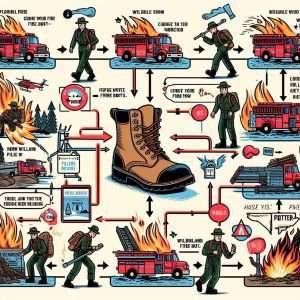 The wildland fire boot’s fit is essential to both your comfort and effectiveness. An ill-fitting boot may result in pain, discomfort, and injury whereas a well-suited boot will avoid blisters, chafing, and weariness. The following advice may help you determine how the wildland fire boots should fit:
The wildland fire boot’s fit is essential to both your comfort and effectiveness. An ill-fitting boot may result in pain, discomfort, and injury whereas a well-suited boot will avoid blisters, chafing, and weariness. The following advice may help you determine how the wildland fire boots should fit:How to choose the weight of the wildland fire boots?
How to choose the style of wildland fire boots?
The practicality and convenience of the wildland fire boots are just as important as their aesthetic appeal. Wildland fire boots come in a variety of styles, including lace-up, zipper, pull-on, and hybrid. Every approach has benefits and drawbacks that vary based on your preferences and the circumstances. Below are some benefits and drawbacks of each style:
Lace-up:
Zipper:
Pull-on:
Hybrid:
How to choose the best wildland fire boots?
The market is filled with several brands and models of wildland fire boots, each with unique characteristics, benefits, and drawbacks. The best brand or model of wildland fire boots will rely on your expectations, financial situation, and personal taste. Based on the details we have shared above with you, we have reviewed and chosen some of the top models and brands of wildland fire boots to assist you in making an informed choice. These are as follows:
White’s Boots 400VLTT Smoke Jumper Lace-To-Toe Boot:
This Boot is a well-known and reputable brand that has been producing boots for wildland firefighters since a certain year (which is missing in the text). These boots are handcrafted with superior leather, steel shank, heel, and toe, and have a Vibram lug sole. They are also resoleable and NFPA certified. While these boots offer great comfort, durability, and protection, they are also pricey and bulky.
Danner Flashpoint II 10 Inch All Leather Work Boot:
 This is another esteemed brand of wildland fire boots that has been producing boots for the military and law enforcement since a certain year (which is missing in the text). This model has a Vibram Fire Logger sole, Nomex stitching, and fire-resistant leather. It is also NFPA certified and resoleable. These boots offer superior heat resistance, stability, and support, but they are also costly and stiff.
This is another esteemed brand of wildland fire boots that has been producing boots for the military and law enforcement since a certain year (which is missing in the text). This model has a Vibram Fire Logger sole, Nomex stitching, and fire-resistant leather. It is also NFPA certified and resoleable. These boots offer superior heat resistance, stability, and support, but they are also costly and stiff.
Chippewa 8” Steel Toe EH 27422 Boot:
 This is a more affordable and lightweight option for wildland fire boots. These boots are made of leather, Goodyear welt construction, and a Vibram Tacoma Logger sole. They are also NFPA certified and resoleable. While these boots offer good traction, flexibility, and comfort, they are less durable and protective than the other models.
This is a more affordable and lightweight option for wildland fire boots. These boots are made of leather, Goodyear welt construction, and a Vibram Tacoma Logger sole. They are also NFPA certified and resoleable. While these boots offer good traction, flexibility, and comfort, they are less durable and protective than the other models.
La Sportiva Glacier WLF Hiking Boot:
 La Sportiva Glacier WLF Hiking Boot is a unique and versatile option for wildland fire boots, as they are designed for both hiking and firefighting. These boots are made of leather, rubber rand, and a Vibram Ice-New sole. They are also NFPA certified and resoleable. These boots offer great breathability, cushioning, and grip, but they are less fire-resistant and supportive than the other models.
La Sportiva Glacier WLF Hiking Boot is a unique and versatile option for wildland fire boots, as they are designed for both hiking and firefighting. These boots are made of leather, rubber rand, and a Vibram Ice-New sole. They are also NFPA certified and resoleable. These boots offer great breathability, cushioning, and grip, but they are less fire-resistant and supportive than the other models.
Handmade wildland fire boots:
Women’s wildland fire boots:
Wildland fire boots clearance:
How to determine the cost of the wildland fire boots?
Ending Note
Choosing the right wildland fire boots is crucial for your comfort, safety, and effectiveness as a firefighter. But with so many factors to consider, like fit, weight, style, cost, and environment, it can be overwhelming. Luckily, we’ve got you covered. Our blog post provides expert advice and instructions to help you make the best decision for your needs. Don’t settle for subpar boots that put you at risk. Follow our guide and select the perfect pair of wildland fire boots. Leave a comment if you have any questions or feedback. Thank you for reading and stay safe out there!
Frequently Asked Questions
What features should I look for in wildland fire boots?
Look for heat-resistant soles, long-lasting materials, enough ankle support, and a comfortable fit. Consider qualities such as insulation, waterproofing, and slip resistance.
What’s the significance of heat-resistant soles in wildland fire boots?
Heat-resistant soles can withstand high temperatures, keeping the soles from melting or failing in the strong heat of a wildfire. This function is critical for your protection.
Why is ankle support important in wildland fire boots?
When crossing uneven and difficult terrain, ankle support can assist in preventing injury. It helps to stabilize your ankles and lowers your risk of sprains and strains.
Should I prioritize comfort in wildland fire boots??
Yes, comfort is essential. During firefighting activities, you may be required to wear these boots for extended periods of time. Make sure they are well-fitting and include padding for enhanced comfort.
What does “NFPA-compliant” mean when it comes to wildland fire boots?
NFPA-compliant boots meet the National Fire Protection Association’s (NFPA) safety standards. It denotes that the boots have undergone extensive testing and meet industry safety standards.
Do wildland fire boots come in different styles and designs?
Yes, lace-up and pull-on boots are available in a variety of styles and designs. Choose the style that best meets your interests and needs.
How to Size Wildland Fire Boots?
For both comfort and safety, it’s important to size wildland fire boots precisely. Using a Brannock gadget, measure your feet first, being sure to take into account both length and width. Please consult the manufacturer’s sizing chart at all times, as brands may have different sizes. To guarantee a good fit, consider the kind of socks you’ll be wearing on firefighting missions.
What Are the Standard Boots for NWCG?
The National Wildfire Coordinating Group (NWCG) advises wearing boots compliant with NFPA 1977 guidelines. These requirements guarantee that the boots offer sufficient defense against the risks encountered when combating wildland fires. Seek out boots that meet the precise specifications provided by NWCG and have features like heat resistance and strengthened construction.
What Is the NFPA Standard for Fire Boots?
Wildland fire boots must meet the minimum performance standards outlined in the NFPA standard, NFPA 1977. This covers requirements for various safety qualities, such as heat resistance and puncture resistance. Make sure fire boots you choose satisfy the required safety criteria by looking for NFPA certification.
How Should Structure Fire Boots Fit?
The ideal fit for structure fire boots is snug but comfortable. Usually, their purpose is to protect and support the ankles during structural firefighting operations. Make sure your toes can fit comfortably inside the boots and that they are snug but not too tight. When it comes to structure fire boots, always go by the sizing guidelines given by the manufacturer.
Can Wildland Fire Boots Have a Steel Shank?
Yes, a steel shank is permissible for wildland fire boots. The steel shank gives the boot’s sole an additional degree of stability and protection. It assists in avoiding cuts from jagged items on the floor. Make sure the boots fulfill all other pertinent safety requirements for battling wildland fires before deciding to purchase any with a steel shank.
Where to Buy Wildland Fire Boots?
Look into both local and internet possibilities when it comes to buying wildland fire boots. You can frequently try on boots at specialty shops and local retailers to ensure the ideal fit. Online marketplaces offer a multitude of options and user reviews, such as websites devoted to firefighting equipment. Authorized dealers and reputable brands are important factors to take into.
Are all wildland firefighting boots waterproof?
Wildland firefighting boots are not completely waterproof. While some types are waterproof, others focus on breathability to keep feet cool. The decision is based on the firefighter’s individual demands and preferences.
What should I consider when choosing the right pair of wildland firefighter boots?
Boot material, sole type, heat resistance, ankle support, size, and waterproofing are all factors to consider. Also, ensure that they fulfill the safety criteria for wildland firefighting.
Are there any maintenance tips for the best wildland firefighter boots?
Yes, routine maintenance is essential. After each use, clean them, inspect them for wear and tear, and recondition the leather if necessary. Keep them dry and well-stored to extend their life.
Can I use wildland firefighter boots for other outdoor activities?
While these boots were built primarily for wildland firefighting, their robust build and longevity make them appropriate for other outdoor activities such as hiking and hunting.
How do I know if my wildland firefighter boots fit correctly?
Proper fit is essential for comfort and safety. Ensure there is enough room for your toes to move comfortably, but not so much that your feet slide. Also, check if they provide adequate ankle support.
What certifications should I look for in the best wildland firefighter boots?
Look for certifications like UL Certification, ASTM F2413, NFPA 1999, and NFPA 1977 when selecting the best wildland firefighting boots. These certificates guarantee that the boots fulfill industry safety requirements for protection in situations involving wildland firefighting. Check the product specifications or get in touch with the manufacturer to determine whether these certifications are present.
Do wildland firefighting boots come in different styles and colors?
A proper fit is critical for both comfort and safety. Allow enough space for your toes to wiggle easily, but not so much that your feet slide. Also, see whether they offer.
What boots do wildland firefighters wear?
Wildland firefighters frequently don protective boots that satisfy NFPA 1977 criteria. These boots offer flexibility and support, and they’re frequently constructed from strong leather and fire-resistant materials. Well-known companies with a strong reputation for dependability and attention to safety regulations are La Sportiva and White’s Boots. Given the demanding nature of the work, selecting the appropriate footwear is essential. You can help with the selection process by talking to seasoned coworkers or by adhering to departmental policies.
What boots does the forest service wear?
The Forest Service frequently wears boots made specifically for rough terrain. These boots provide essential protection since they adhere to industry requirements such as NFPA 1977. Common elements include fire-resistant materials and sturdy leather. Well-known brands with a safety record, like Whites Boots, are preferred. The Forest Service requires workers to wear appropriate footwear for the rigorous nature of their work. Following departmental policies or consulting with more seasoned coworkers might help determine the best boots to wear.
Which are the women’s best wildland firefighting boots?
The La Sportiva Women’s Glacier WLF is a great option for women looking for the best wildland fire boots. These boots have an excellent reputation for being safe and long-lasting. For women fighting wildland fires, they are a dependable option since they combine protection and comfort. When choosing women’s wildland fire boots, give top priority to features like fire-resistant materials and conformity to NFPA standards for maximum safety and performance.
What boots do hotshots wear?
Hotshots often choose Haix wildland boots for their demanding work. These boots satisfy the strict requirements needed for combating fires and are well-known for their resilience and safety features. Hot shoots often choose Haix wilderness boots because they are dependable in difficult circumstances and offer protection and comfort.
How long are fire boots good for?
Fire boots have a limited lifespan and can deteriorate over time due to various factors, including natural wear and tear, extreme conditions, and usage. The National Fire Protection Association recommends replacing fire boots every five years, regardless of their condition. Signs that indicate that fire boots need to be replaced include worn-out soles, dented or exposed toes, torn or burned upper parts, broken fasteners, and improper fit. It’s important not to repair or modify fire boots as this can affect their safety and void their warranty and certification.
What do firefighter call their boots?
Depending on the region and culture, firefighters’ boots have varied names. Bunker boots, Fireman boots, and Logger boots are other common names.
Do firefighters have specific terminology for their boots?
Yes, firemen frequently use jargon to describe their boots. Understanding this jargon allows you to gain insight into the tight-knit culture of the firefighting community.
What makes Danner a reliable choice for wildland fire boots?
Danner is known for its exceptional quality and durability. The brand consistently meets the rigorous demands of firefighting, making their boots a reliable choice for professionals.
How can I ensure the best fit when purchasing fire boots online?
Pay attention to sizing charts provided by manufacturers, read customer reviews for insights into sizing accuracy, and consider brands that offer return policies in case of sizing issues.
How do tread patterns contribute to the performance of fire boots?
Tread patterns are crucial for providing traction on various terrains. They enhance grip and stability, ensuring firefighters can navigate challenging environments with confidence.
Why is heel design an important factor in wildland fire boots?
Heel design plays a pivotal role in stability and support during firefighting operations. A well-designed heel ensures balance and minimizes the risk of slips or falls in dynamic situations.
Can I customize my fire boots for a better fit?
Yes, customization is possible with brands like Custom JK Boots. Firefighters can tailor their boots for optimal comfort and performance, addressing individual preferences and specific needs.
What distinguishes wildland fire boots from structural fire boots?
Wildland firefighting boots are designed for outdoor environments and focus on heat resistance and comfort. Structural firefighting boots, on the other hand, meet specific standards for protection against heat, chemicals, and other hazards encountered in structural firefighting.
Are there specific fire boots designed for women?
Yes, many brands offer fire boots specifically designed for women. These boots prioritize a comfortable fit while maintaining the necessary safety features required for firefighting.
How do HAIX fire boots stand out in structural firefighting?
HAIX fire boots are renowned for setting the standard in structural firefighting. Their advanced features, including heat resistance and durability, make them a top choice among firefighters.
Where can I find real reviews and recommendations for the best wildland fire boots?
Check online platforms like Reddit and Quora where the firefighting community shares experiences and reviews. These discussions offer valuable insights into the performance of different firefighter boots in real-world scenarios.
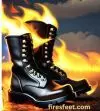


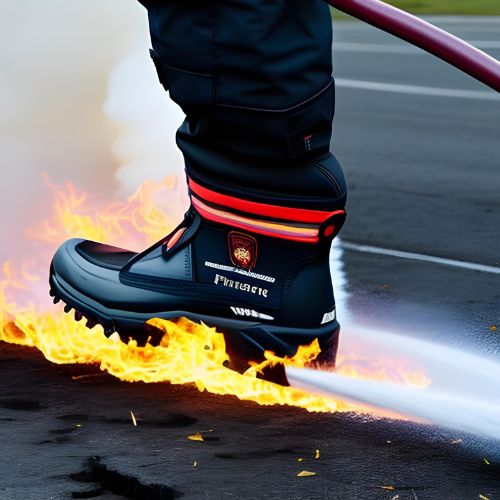
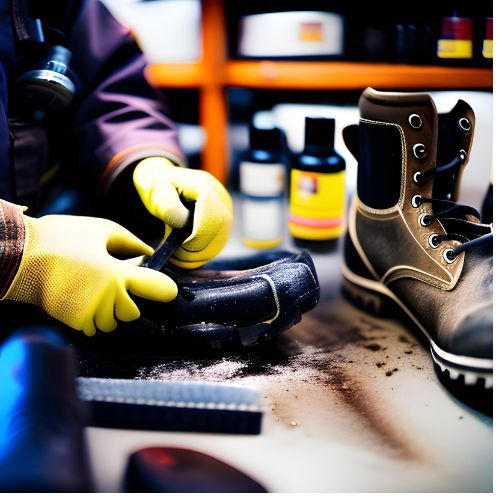
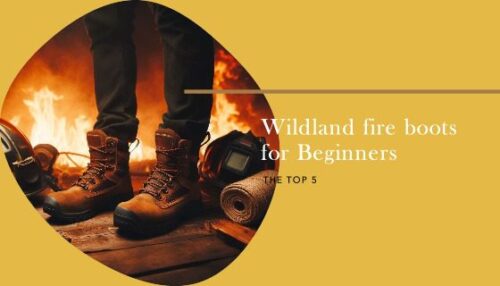
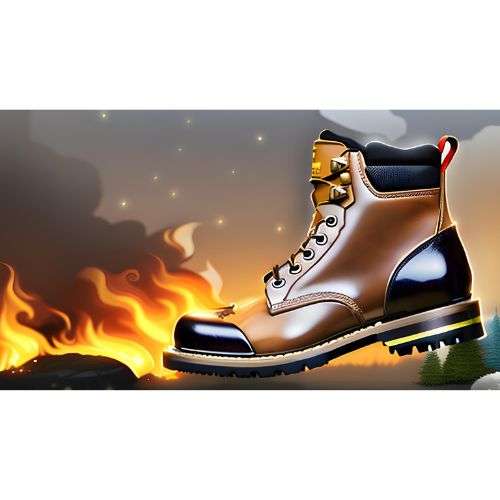
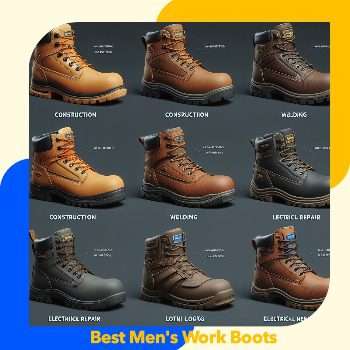
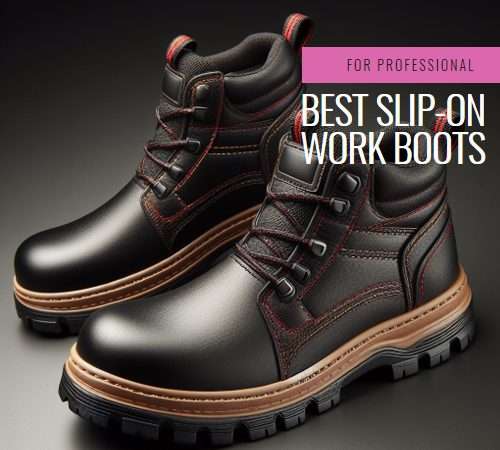
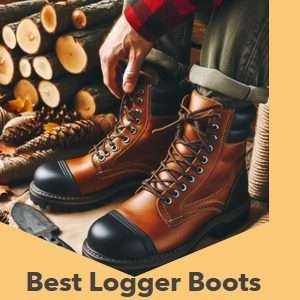
Thanks for detail explanation.
Pingback: How to Choose the Best Upland Hunting Boots for Your Next Outing
Pingback: The Best (and Worst) Wildland Fire Boots Brands
Pingback: How to Choose the Best Boots for Yard Work: The Complet Guide
Pingback: What is the Best Shoe to Wear with Walking Boot?
Pingback: How to Choose the Best Work Boots for Plumbers: A detailed Guide
Pingback: How to Choose the Best Snake Boots: Step into Safety
Pingback: Ultimate Wildland Firefighter Boots for Maximum Protection
Wow, fantastic blog structure! How lengthy have you been blogging for?
you make blogging look easy. The overall glance of your site is great,
let alone the content! You can see similar: sklep internetowy and here sklep internetowy
You should take part in a contest for one of the best blogs on the web. I will recommend this site!